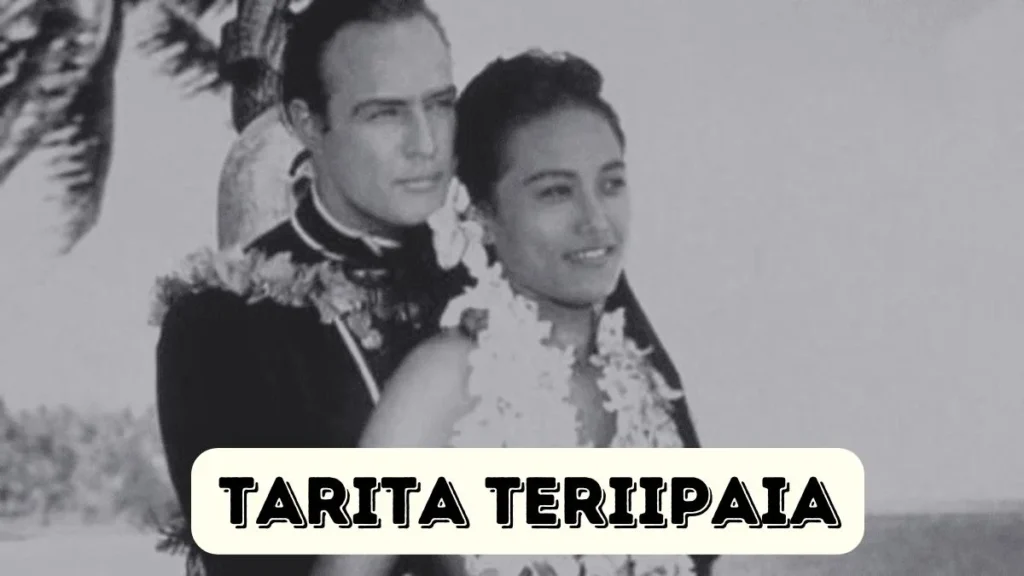Tarita Teriipaia was born on December 29, 1941, in the idyllic setting of Bora Bora, French Polynesia. With her mixed heritage of French Polynesian and Chinese descent, Tarita grew up immersed in the rich cultural traditions of her homeland. This unique background would later inform her identity as an actress and a prominent figure in the film industry. Raised in the picturesque beauty of the South Pacific, Tarita’s early life was marked by the serene landscapes and vibrant community of Bora Bora, which would shape her character and values.
Rise to Fame: “Mutiny on the Bounty”
Tarita’s entry into the world of cinema began with her role in the 1962 film Mutiny on the Bounty, directed by Lewis Milestone. In this adaptation of the classic maritime story, she portrayed Maimiti, the daughter of the chief of a Tahitian village. Her performance garnered significant attention, leading to a nomination for the Golden Globe Award for Best Supporting Actress. Tarita’s natural talent and captivating presence on screen helped her stand out, making her one of the film’s memorable characters.
The film not only marked her debut but also set the stage for a life-changing encounter. It was on the set of Mutiny on the Bounty that she met the legendary actor Marlon Brando, who played the role of Captain Fletcher Christian. Their chemistry was palpable, and the two quickly fell in love, both on and off the screen.
Relationship with Marlon Brando
Following their initial meeting, Tarita and Marlon’s relationship blossomed. In the same year that Mutiny on the Bounty was released, they were married, making Tarita Brando’s third wife. Their union was characterized by passion and tumult, reflective of both their personalities. The couple welcomed two children during their marriage: a son named Simon Teihotu, born in 1963, and a daughter named Tarita Cheyenne, who lived from 1970 until her tragic passing in 1995.
Despite their initial happiness, the marriage faced challenges that ultimately led to their divorce in 1972. Tarita’s experience with Marlon Brando was multifaceted—filled with love, creativity, and profound struggle. Their relationship exemplified the complexities of being married to one of Hollywood’s most enigmatic figures, often marked by the pressures of fame and personal turmoil.
Life After Brando
Following her divorce from Brando, Tarita Teriipaia took a step back from the limelight. She focused on raising her children and navigating the aftermath of her high-profile relationship. While she did not pursue an extensive acting career afterward, her association with Brando ensured she remained a figure of interest in media and entertainment circles.
In 2004, just months after Brando’s death, Tarita published her memoirs titled “Marlon, My Love and My Torment.” This candid account of her life with the iconic actor provided insight into their relationship, shedding light on both the joy and pain that defined their time together. The memoir resonated with readers, offering a glimpse into the life of one of Hollywood’s most celebrated couples.

Legacy and Later Years
Tarita Teriipaia is recognized not only for her connection to Marlon Brando but also for her contributions to film and her representation of Polynesian culture in Hollywood. As the only surviving wife of Brando after the deaths of Movita Castaneda and Anna Kashfi in 2015, her legacy continues to evoke fascination.
Today, Tarita remains a revered figure in the realm of entertainment, often celebrated for her grace and strength. Her life story serves as a testament to the complexities of love and the impact of cultural heritage. Although her film career was brief, her role in Mutiny on the Bounty solidified her place in cinematic history, and her memoir offered a personal look at a man whose life was filled with both brilliance and struggle.
Cultural Impact: Tarita Teriipaia
As a woman of Polynesian descent who achieved recognition in an industry historically dominated by Western narratives, Tarita Teriipaia’s presence in film represents a broader narrative of diversity in Hollywood. Her role in Mutiny on the Bounty not only introduced audiences to the beauty of Tahitian culture but also challenged stereotypes surrounding Polynesian people.
Tarita Teriipaia’s story is not just one of personal relationships but also reflects the shifting dynamics of race, culture, and representation in cinema. Through her performances and personal experiences, she contributed to a dialogue about the importance of authentic representation of indigenous cultures in media.
Conclusion: Tarita Teriipaia
Tarita Teriipaia’s life is a rich tapestry woven with love, struggle, and cultural pride. From her early years in Bora Bora to her rise as an actress and her complex relationship with Marlon Brando, her story is one of resilience and authenticity. As she continues to navigate her later years, Tarita remains a vital figure in the legacy of Hollywood, embodying the beauty and complexity of the human experience. Through her memoir and her connections to a cinematic icon, she has ensured that her voice and story will be remembered and celebrated for generations to come.









